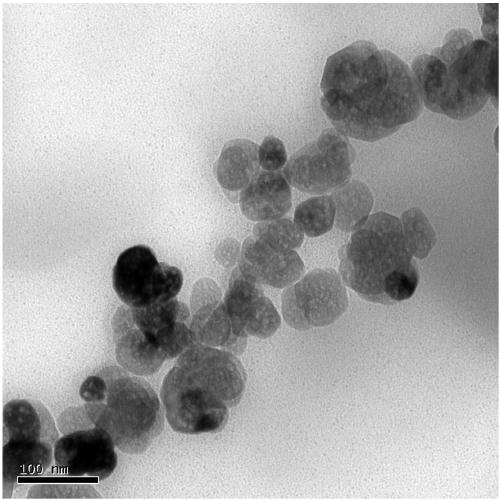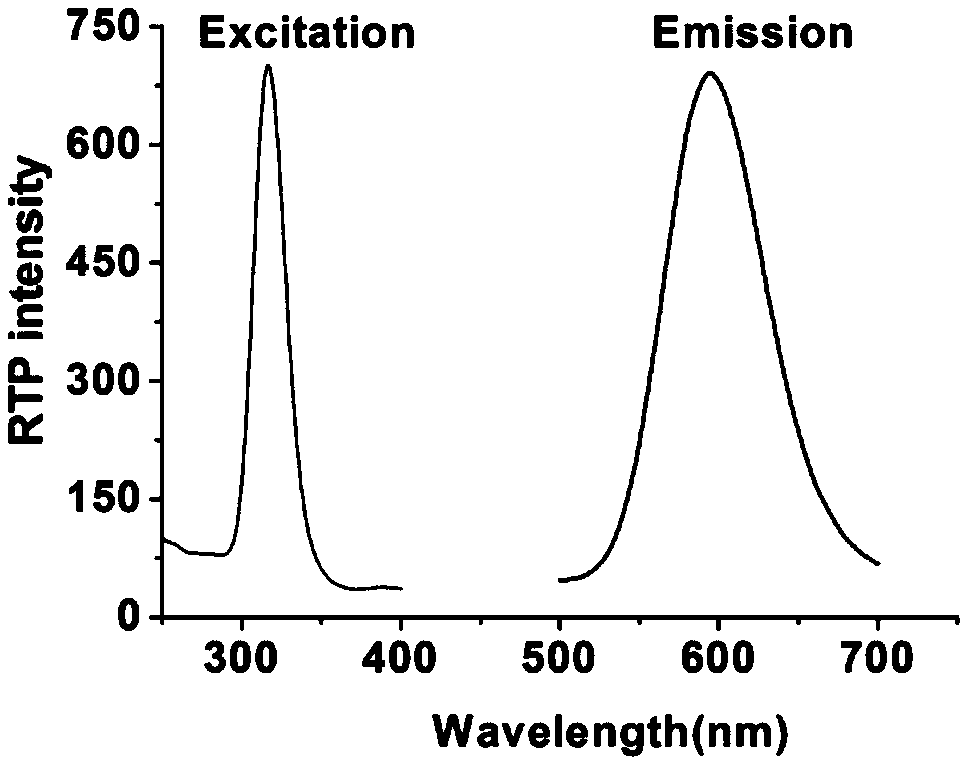A kind of synthesis method of magnetic phosphorescent microcystin imprinting material
A technology of microcystin and imprinting material, which is applied in the field of synthesizing magnetic phosphorescent microcystin imprinting material, can solve the problem that the imprinting material does not have detection function and the like, and achieve the effect of high selectivity and high affinity
- Summary
- Abstract
- Description
- Claims
- Application Information
AI Technical Summary
Problems solved by technology
Method used
Image
Examples
preparation example Construction
[0023] A method for synthesizing a magnetic phosphorescent microcystin imprinting material according to an embodiment of the present invention, the method comprising:
[0024] (1) Add a crosslinking agent to the aqueous solution of magnetic nanoparticles, mechanically stir for 10-15h, then add Mn-doped ZnS quantum dots, continue stirring for 2-24h, and cross-link the magnetic nanoparticles and Mn-doped ZnS phosphorescent quantum dots Obtain a nanocomposite material; remove the Mn-doped ZnS phosphorescent quantum dots that are not cross-linked with the magnetic nanoparticles by magnetic separation;
[0025] (2) Dissolve the nanocomposite material and algae toxin obtained in step (1) in water, ultrasonic 2-20min, then add polyethyleneimine and crosslinking agent, continue to stir for 2-24h, the nanocomposite material in the The excess amino groups on the surface of the phosphorescent quantum dots are cross-linked with the amino groups of polyethyleneimine, the surface of the mag...
Embodiment 1
[0034] Embodiment 1 of the present invention The synthesis method of magnetic phosphorescent microcystin imprinting material comprises the following steps: (1) Synthesis of magnetic nanoparticles by hydrothermal method: 0.15g of ferric chloride is added to 50mL of ethylene glycol solution, and then 1g of Sodium acetate and 0.25 g of polyethyleneimine with a molecular weight of 1800 were stirred for 1 h to obtain a homogeneous solution, and then the solution was transferred to a reaction kettle and reacted at 200 ° C for 8 h. After the reaction, it was cooled, washed three times with water and once with ethanol, and dried in vacuum to obtain dry powder of magnetic nanoparticles. figure 1 It is an electron micrograph of the magnetic nanoparticle of the embodiment of the present invention.
[0035] (2) Synthesis of amino-modified Mn-doped ZnS quantum dots: (a) in a 100mL three-necked flask, 50mmol Zn(Ac) 2 and 5mmol Mn(Ac) 2 Sonicate to dissolve in 40ml deionized water. Under ...
Embodiment 2
[0040] Example 2 of the present invention The synthesis method of the magnetic phosphorescent microcystin imprinting material comprises the following steps:
[0041] (1) Synthesis of magnetic nanoparticles by hydrothermal method: 0.4g of ferric chloride is added to 50mL of ethylene glycol solution, then 3g of sodium acetate and 0.8g of polyethyleneimine with a molecular weight of 6000 are added, and the solution is magnetically stirred for 1h. A homogeneous solution was obtained, and then the solution was transferred to a reaction kettle, and reacted at 150° C. for 7 hours. After the reaction, it was cooled, washed three times with water and once with ethanol, and dried in vacuum to obtain dry powder of magnetic nanoparticles.
[0042] (2) Synthesis of amino-modified Mn-doped ZnS quantum dots: (a) in a 100mL three-necked flask, 30mmol Zn(Ac) 2 and 3mmol Mn(Ac) 2 Sonicate to dissolve in 30ml deionized water. Under magnetic stirring at room temperature, after nitrogen protect...
PUM
 Login to View More
Login to View More Abstract
Description
Claims
Application Information
 Login to View More
Login to View More - R&D
- Intellectual Property
- Life Sciences
- Materials
- Tech Scout
- Unparalleled Data Quality
- Higher Quality Content
- 60% Fewer Hallucinations
Browse by: Latest US Patents, China's latest patents, Technical Efficacy Thesaurus, Application Domain, Technology Topic, Popular Technical Reports.
© 2025 PatSnap. All rights reserved.Legal|Privacy policy|Modern Slavery Act Transparency Statement|Sitemap|About US| Contact US: help@patsnap.com


